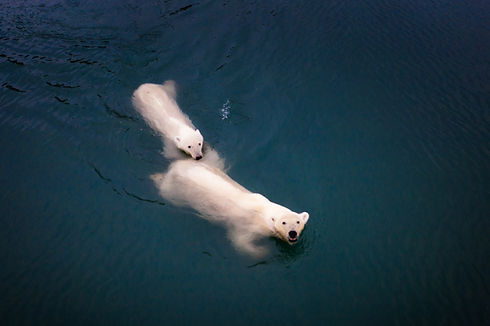
SCIENCE AND CLIMATE CHANGE
Much is spoken of climate change today; indeed, it is a topic of major global concern. But how much do we truly understand it?
To what extent do we fully grasp the 'why's' and 'how's' of our rapidly changing climate? What can we do to prevent it? Can we prevent it all? How will the world as we know it, transform and impact our lives in the days and decades to come, as we enter a new age of rising temperatures and extreme weather? What can we learn from climatic events of the past?
Tom explores all these themes and more in his work, Exploring Our Changing Climate, which you can purchase online now via Amazon.

THE WORLD AS WE KNOW IT IS CHANGING FAST...
We are entering another period of rapid climate change, once more due to the sudden emission of carbon dioxide and other warming greenhouse gases. But this time exploding volcanoes, colliding asteroids or oceanic methane bursts aren't the culprits.
We ourselves are to blame – chiefly by burning fossil fuels like coal and oil, and by cutting down forests.
UNDERSTANDING GLOBAL WARMING
To better forecast likely trajectories of global warming, we need first to understand natural climate variations on a time scale of decades and centuries.
Although scientists had long acknowledged that climate disasters had happened many thousands or millions of years ago, it wasn't until the last decades of the twentieth century that they accepted that significant natural climate changes had taken place in historical times.

EXPLORING OUR CHANGING CLIMATE

Tom became involved with this application of science in the 1970s. He worked with climate change pioneers Hubert Lamb and Tom Wigley, both then at the Climatic Research Unit at the University of East Anglia, and geologist Nick Shackleton of the University of Cambridge, to produce for the London Science Museum what was probably the world's first major exhibition on climate change

CLIMATE CHANGE ON DISPLAY
Conceived by Science Museum curator John Becklake, the Science Museum exhibition highlighted unexpected climate records such as French wine harvest dates and Japanese records of cherry blossom flowering, as well as more conventional data like tree rings, ice cores and Nick Shackleton's deep sea core marine isotopes.
The exhibition showed how such proxy data could complement the limited instrumental records to enable the reconstruction of historical climate variations. The displays explained that these variations were likely caused both by external forces such as solar variability and explosive volcanic eruptions, and also by internal rhythms within the earth's climate system.
Photo:
Cherry blossom with Mount Fuji in the background by Utagawa HIroshige 歌川広重.

WHAT A WARMING PLANET MEANS FOR US ALL
In the late 1970s Hubert Lamb was still arguing that, as a result of continuing natural climate variations, average global temperatures might continue to fall from the peaks of the 1940s. Nevertheless, the Science Museum exhibition warned of the dangers of anthropogenic global warming.
Carbon dioxide levels in the atmosphere, measured at an observatory below the summit of Mauna Loa volcano, Hawaii, had already risen from the pre-industrial level of around 270 parts per million by volume to around 335 parts per million in 1976.
Levels of the gas were expected to continue to rise, and in his 1977 booklet accompanying the exhibition Tom wrote: “by the end of the century its [carbon dioxide's] warming effects could become the predominant influence on our climate”.
Photo: Ancient Bristlecone Pine (Pinus longaeva) White Mountains, California, near the upper elevation limit of tree growth. Variations in the annual growth rings of these pines record climate changes over the millennia. Courtesy: Wilson44691 and Wikipedia
THE CHALLENGE THAT AWAITS OUR DESCENDANTS
Tom’s prediction in the Science Museum booklet appears to have been proved correct. Since 1977 carbon dioxide levels at the Mauna Loa observatory have climbed to around 392 parts per million in 2010 and average global surface temperatures have increased by around 0.5 degrees centigrade.
Though unpredictable natural forcing, for example solar variability, will continue to complicate matters, forcing from anthropogenic emissions of carbon dioxide, particularly as a result of increased coal-burning by China and other developing economies, will increasingly dominate. Various climate feedbacks will kick in and the resulting rises in temperature and sea level, together with other climatic effects will interact with other growing problems, such as those resulting from economic and population growth.
As a result, the twenty-first century will present humanity with its greatest challenge since our innovative African ancestors survived a devastating ice age in Marine Isotope Stage Six, between about 195,000 and 123,000 years ago.


